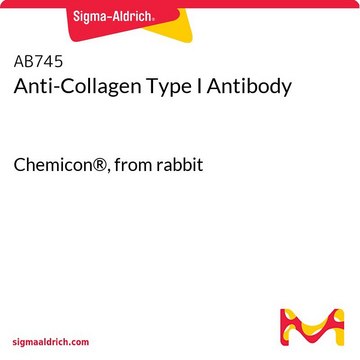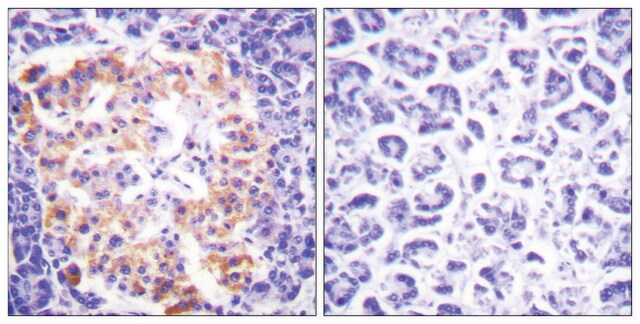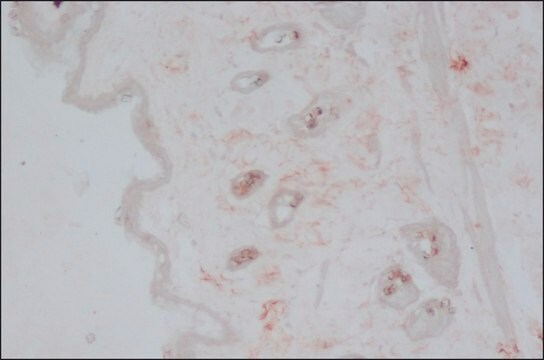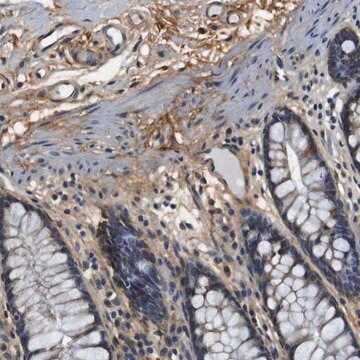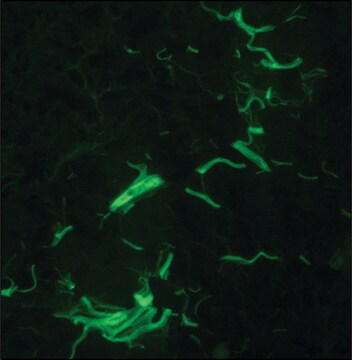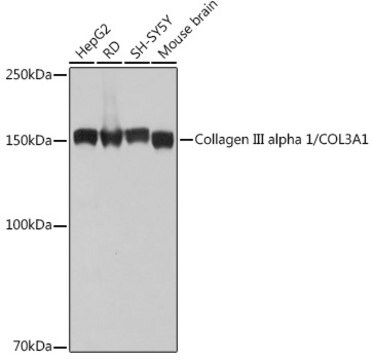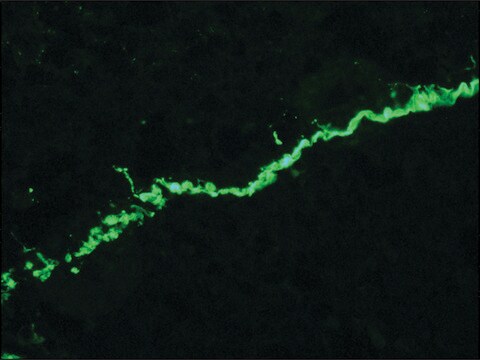AB747
Anti-Collagen Type III Antibody
Chemicon®, from rabbit
Synonym(s):
Anti-EDS4A, Anti-EDSVASC, Anti-PMGEDSV
About This Item
Recommended Products
biological source
rabbit
Quality Level
antibody form
fractionated antiserum
antibody product type
primary antibodies
clone
polyclonal
species reactivity
human
manufacturer/tradename
Chemicon®
technique(s)
ELISA: suitable
immunofluorescence: suitable
suitability
not suitable for Western blot
not suitable for immunohistochemistry (Paraffin)
NCBI accession no.
UniProt accession no.
shipped in
wet ice
target post-translational modification
unmodified
Gene Information
human ... COL3A1(1281)
Specificity
Cross Reactivity Percent
Human collagen type I 10%
Human collagen type II 2%
Human collagen type III 100%
Human collagen type IV and V 4%
Human plasma proteins do not interfere with binding to collagen.
Immunogen
Application
Indirect immunofluorescence on cryostat sections or cultured cells 1:20-1:40
Optimal working dilutions must be determined by the end user.
Physical form
Immunoglobulin fraction was prepared by ammonium sulfate precipitation and chromatography on DEAE-cellulose, of antiserum cross-absorbed over immobilized human serum proteins, immunoglobulins, and collagen types I, II, IV and V.
Storage and Stability
Legal Information
Not finding the right product?
Try our Product Selector Tool.
recommended
Storage Class Code
12 - Non Combustible Liquids
WGK
WGK 2
Flash Point(F)
Not applicable
Flash Point(C)
Not applicable
Certificates of Analysis (COA)
Search for Certificates of Analysis (COA) by entering the products Lot/Batch Number. Lot and Batch Numbers can be found on a product’s label following the words ‘Lot’ or ‘Batch’.
Already Own This Product?
Find documentation for the products that you have recently purchased in the Document Library.
Our team of scientists has experience in all areas of research including Life Science, Material Science, Chemical Synthesis, Chromatography, Analytical and many others.
Contact Technical Service